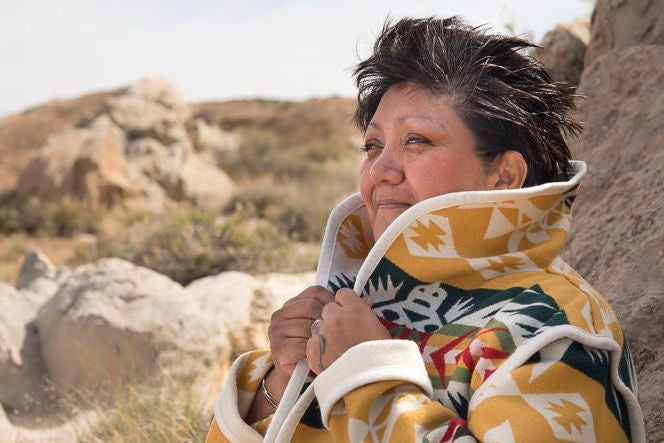The Fight for Bears Ears National Monument

'“We want to honor those who once roamed here, and protect the land for those who come,” says Regina Lopez-Whiteskunk, head councilwoman of Ute…'
Even as art heists go, it was brazen. Armed with rock saws and chisels, the thieves snuck into the redrock backcountry outside Bluff, Utah, earlier this year and found their target etched into a sandstone wall: a 2,000-year-old petroglyph of a dancer. The figure’s broad chest was covered with dazzlingly ornate necklaces and belts that likely required hours of artistry to create on the rock. When the rock saw didn’t work, the would-be thieves tried the chisel, and when that didn’t work either, “They left it mauled,” says Bluff resident Josh Ewing, executive director of Friends of Cedar Mesa, an advocacy group promoting the protection of southeast Utah’s canyonlands.
This sort of destruction is distressingly common. In March this year, an ATV rider revved through a 1,200-year-old archaeological site, doing donuts in the Ancestral Puebloan dwellings. Last year, grave robbers looted multiple sites and tossed aside human bones in order to filch the valuable ceramics buried alongside them. Such raids have gone on for decades, likely because in this vast, sparsely populated landscape, there’s virtually no one on watch: The Bureau of Land Management employs just one full-time law enforcement officer to patrol Cedar Mesa’s 56,000 archaeological sites. And Cedar Mesa is part of a much broader cultural landscape estimated to contain as many as 250,000 sites left by the predecessors of some of today’s native tribes.
Now, those tribes are banding together to preserve their heritage: In October 2015, five tribes (the Navajo Nation, Ute Mountain Ute Tribe, Pueblo of Zuni, Hopi Tribe, and Uintah & Ouray Ute Indian Tribe) asked President Obama to create a new national monument encompassing the area and to give the tribe a cooperative role in its management.
Referred to as Bears Ears, the proposed monument would extend south from Canyonlands National Park to the San Juan River, an area encompassing 1.9 million acres—roughly the same size as Grand Staircase-Escalante National Monument.
“Passing on your heritage to your children and grandchildren is one of the greatest honors that one has, so it’s disheartening to have others take away our ability to do that,” says Regina Lopez-Whiteskunk, head councilwoman of the Ute Mountain Ute Tribe and a leader in the Bears Ears initiative. The tribes had to overcome a long history of conflict to join together in an effort more important than territorial claims. “We’ve put aside our traditional enemy lines to support a common goal: to honor those that once roamed here, to protect these lands for those to come, and to educate people about why these places are so significant,” she says.
Some parks (such as Mesa Verde and Canyonlands) already protect fragmented slivers of Native Americans’ cultural heritage. But historically, tribes have only been invited to consult—and their recommendations haven’t always been implemented. The Bears Ears proposal would position the tribes among the decision makers and educators. “Our goal isn’t to identify Native Americans as the monument’s sole users,” says Lopez-Whiteskunk, “but to share these lands and our knowledge with everyone.”
Some Utahns fear ceding the lands’ management to NPS jurisdiction—the designation of Grand Staircase-Escalante left many feeling railroaded—but Ewing feels confident there’s enough public support for the designation. Now it’s up to Obama to decide whether to use the Antiquities Act of 1906, which empowers the President to create national monuments on public lands to protect significant natural, cultural, or scientific features, as he has done eight times since entering office.
“What we want to achieve in this proposal is a sense of healing,” says Lopez-Whiteskunk. “We need to speak and stand up for the land, because it can’t speak for itself.”